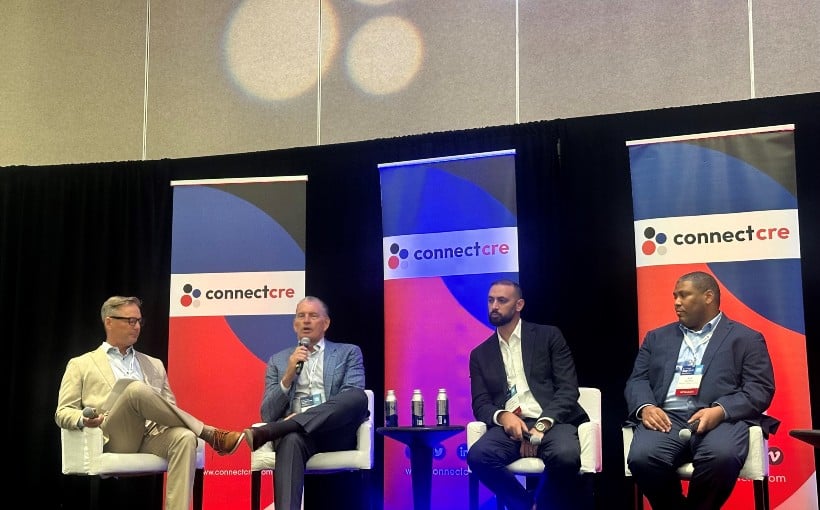In terms of lending activity, 2023 can be described as a year with two strong quarters at the beginning and end, but with two volatile quarters in between. This was how Gary Bechtel, CEO of Red Oak Capital Holdings, summarized the previous year during his participation in the Connect Orange County 2024 conference earlier this month.
By comparison, Bechtel noted that 2024 has been more stable due to a consistent interest rate environment for short-term rates which are used to determine loan rates.
Bechtel joined fellow panelists James Ruiz from Gantry Real Estate Capital Partners LLC., Eddie Prosser from Thorofare Capital Inc., Bali Kumar from PACE Loan Group and Cory Jubran from Nuveen Green Capital on September 10th for a discussion titled “Getting Deals Done: Financing in Today’s Market & Beyond,” moderated by William Ahern of Allen Matkins.
Prosser also commented on the contrast between last year and this one. He observed that at the start of this year there was mostly refinancing activity happening for over-leveraged assets with unique stories attached to them. As a result, many investors were hesitant about making new acquisitions.
Looking ahead into next year, Prosser predicts an increase in equity capital entering both real estate markets and overall financial markets as some investors may look to diversify their portfolios away from an overheated stock market into real estate investments due to potential softening interest rates.
One financing tool that has gained popularity is PACE (Property Assessed Clean Energy). Introduced in California four years ago , PACE has become increasingly utilized as rescue capital by banks struggling to find participants for deals according Kumar who serves as COO at PACE Loan Group. This trend has contributed significantly towards its growth every passing quarter since its introduction despite initial skepticism among some market players regarding its acceptance and understanding within traditional financing structures .
However , distressed debt properties have not yet hit the sales market as much as some would expect. Senior director with Gantry, Ruiz noted that he has not seen many distressed properties come across his desk yet. He believes this is because lenders are extending loans and helping borrowers quietly in hopes of refinancing them when interest rates decrease.
Looking ahead, Jubran predicts that many lenders who made 75% LTV (loan-to-value) loans over the past five to six years will end up owning these properties due to potential defaults by borrowers. This trend is already evident in cities like New York where Blackstone has given away keys and Seattle which is experiencing a high number of issues.
Jubran also commented on how “extend and pretend” was a common practice among lenders for some time but may not be sustainable for all types of lending institutions going forward. While banks may continue this practice due to strong counterparties, other financial institutions such as funds who have provided warehouse or repo lines may end up owning more distressed properties in the future.




